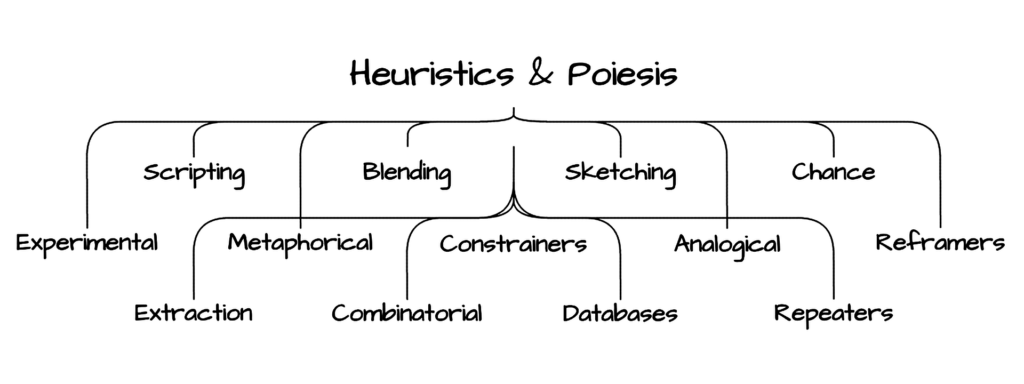Exploring Modes of Human-Machine Co-Authorship
Commissioned artwork, TANK Shanghai (CN)
Wall print, 4×4 meters
2023
Wall print, 4×4 meters
2023
It has already been demonstrated that AI systems possess a remarkable capacity to discover new patterns and relationships within complex tasks far better than humans. If provided with a large dataset, an AI system can scan an entire field of possible combinations and return outputs that can be considered novel or even ingenious. In the case of identifying patterns within a dataset, artificial intelligence excels. However, in the case where the machine needs to expand the boundaries of its knowledge base and extrapolate from the outset of the training dataset, its performance is challenged. This extrapolative characteristic is important for the machine to demonstrate that it can be considered as “creative”.
This work examines the boundaries of creativity through a hybrid collective of human and computational (LLM) agents. This collective has been tasked to generate thousands of original definitions that explain what human and machine creativity is. The generation of this continuous flow of definitions can be rather challenging, as it has also been highlighted by the Alternative Uses Test (Guilford, 1967). In addition to this, a series of constraints have been given to human and machine creators alike:
To achieve such a goal it is critical to consider the patterns within a large dataset that a computational system can recognize, combined with the extrapolative qualities of a human. This collaborative framework possesses a much larger capacity to produce outputs that hint at creativity and originality at scale. This work, therefore, examines these collaborative intersections closely and aims to highlight co-authorship that assists in the production of creative work that could not be achieved by each agent independently.

The audience is tasked with perceiving the juxtapositions and parallels within the “human creativity” / “machine creativity” dichotomy. Amidst this ceaseless flow of definitions, the distinction between human and machine creativity becomes intriguingly porous, often merging in a provocative overlap that suggests a previously unseen connection. This engagement encourages an exploration of the fluid and often blurred boundaries of creativity, ultimately questioning the binary oppositions that are often taken for granted, and offering an exploration into the converging realm of human and machine co-authoring.
The final output is displayed on a large 4x4m print.
The work has been exhibited in Synthetic Cities.
Creation & Production: Stavros Didakis
Media Design Assistance: Yanrui Shao、Guoxi Yang、Vicky Chen
Production Coordinator: Huijun Guan
LED Equipment: Leyard | Linso LED
Co-Funded: West Bund Group